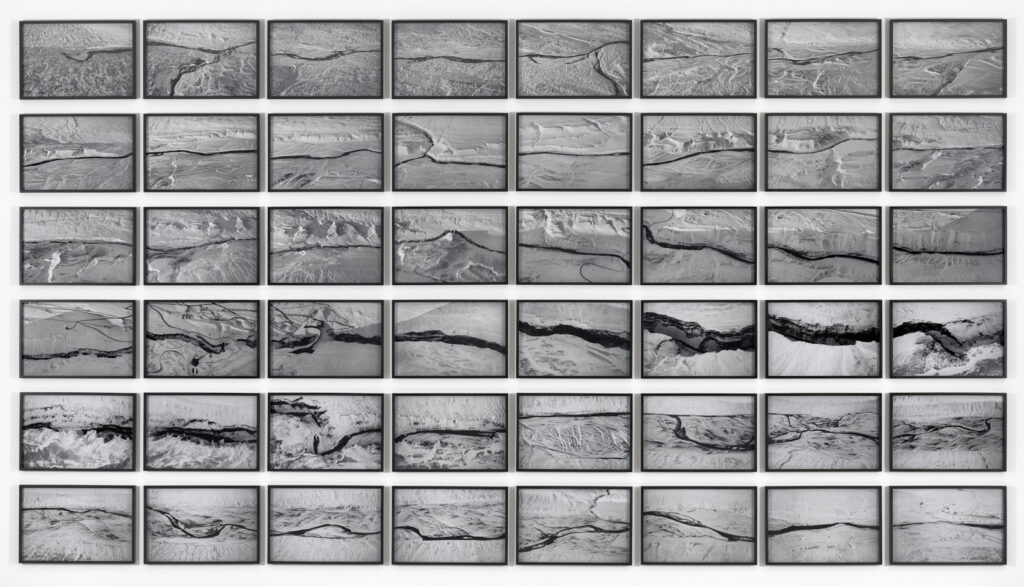
In 2004 Olafur Eliasson made The Jokla Series, a grid of 48 aerial photos of the Jokla, a river fed by Iceland’s largest glacier, Vatnajökull, which was threatened by the proposed construction of a large dam to power an aluminum smelting plant. Aerial traces of a river’s path and hydroelectric construction sites had each been the subject of a photo grid before, in 2000.
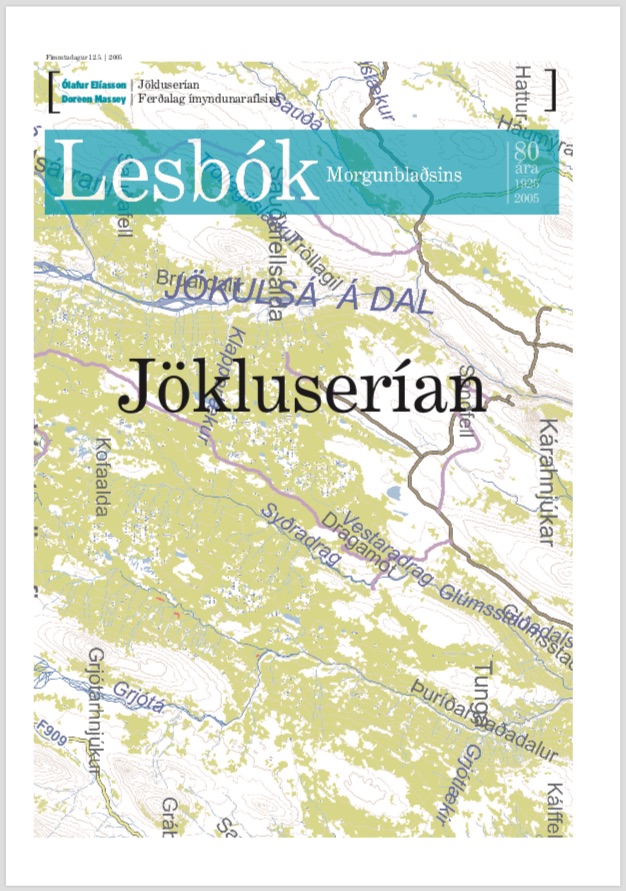
But by 2004 Eliasson’s prominence, and the significance of the Jokla damming controversy brought added attention to his examinations of the Icelandic landscape. In May 2005, Morgunblaðið, the largest newspaper in Iceland, published a special standalone issue containing all 48 Jokla photos, plus an essay on place by Doreen Massey.
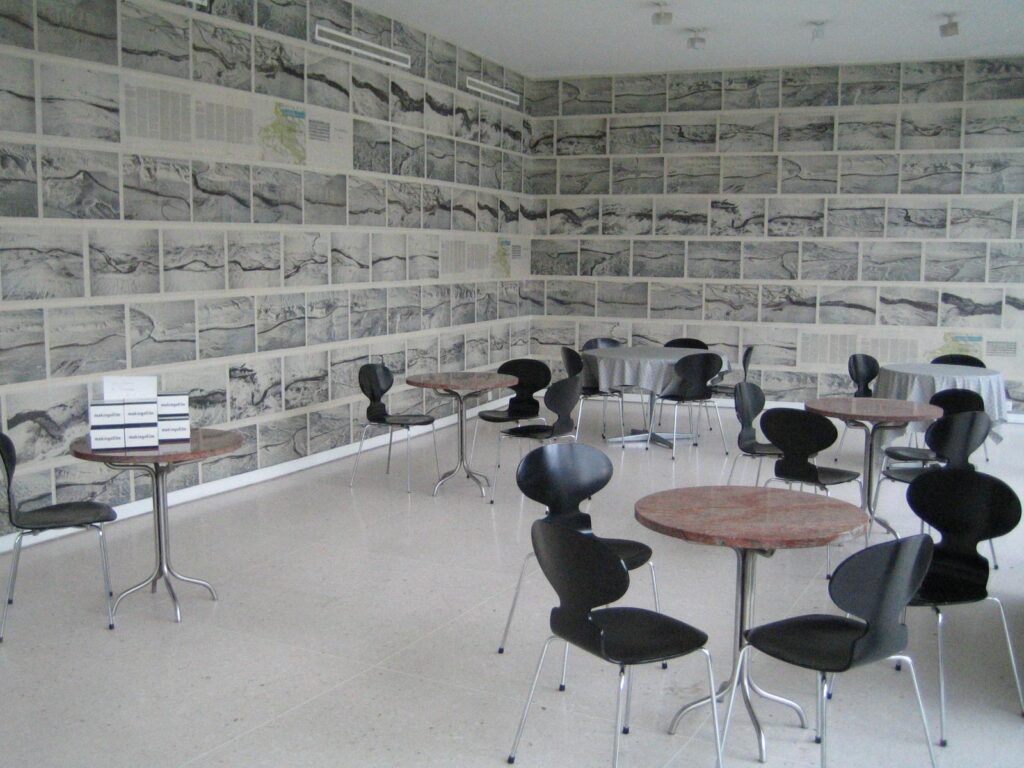
Later in 2005, Eliasson opened a show at the Kunsthaus Zug titled, “The body as brain.” Eliasson installed copies of the Morgunblaðið Jökluserían issue as wallpaper for the Kunsthaus Bar. The show remained into 2006 as part of “Projekt Sammlung,” or “collection project,” a multi-year collaboration with the innovative institution, “an artistic process in which the viewer, the work and the museum mediate anew with regard to the constitution of reality.”

Though the aluminum dam got built and the river got screwed, and the Projekt Sammlung was successful, but is dormant, The Jokla Series continues to mediate anew with regard to the constitution of reality. An extraordinary photo grid is for sale at Sotheby’s next week, which is titled The Jokla Series.
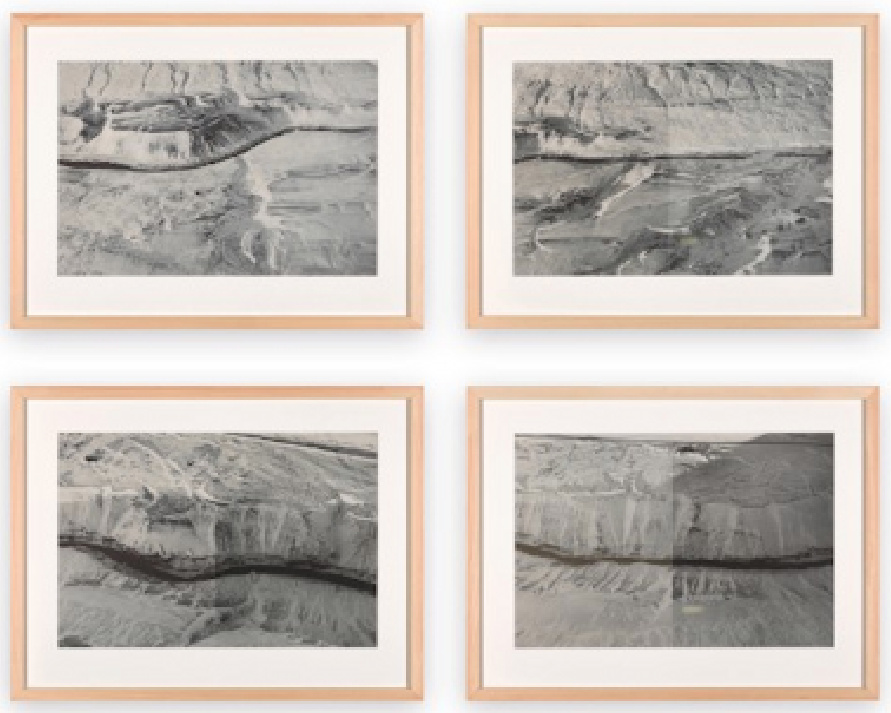
Its dimensions and framing differ from the The Jokla Series in MoMA’s collection, and each photo, described as c-prints by the auction house, has, not a crease, but a seam down the center.
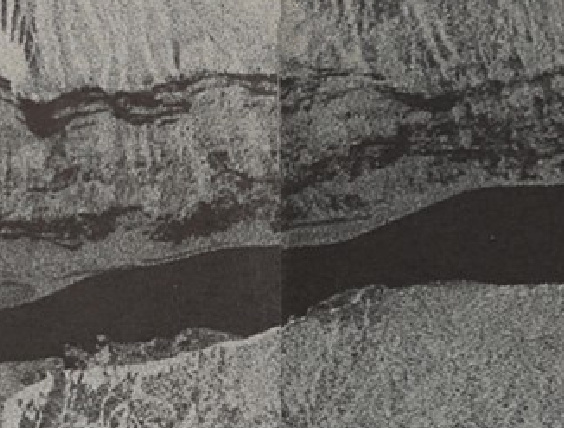
I think they are the prints from the Morgunblaðið Jökluserían issue–two issues, actually–cut and pieced together, as the wallpaper was, and framed à la Eliasson (except for those mats, obv), by a Danish, not Swiss, framer, who I think even wrote the page numbers on the verso. If they are indeed c-prints (I’m waiting for the condition report*), then they are rephotographed images of the assembled newspaper prints, which is even more extraordinary. Olafurian reality is constituting around me anew as I stare at my screen in awe and admiration. I mean, the framing alone had to cost EUR5000.
The provenance states they came from the artist, and thence by descent, so one degree of separation from the origin/al owner. All of this is happening in the bright light of the art world assembled, at one of our most august mercantile institutions. So if this collection project stays around until the hammer drops, it will indeed be an exceptional work, with an exceptional backstory. And if it doesn’t, well, as glaciers and the rivers that flow from them can sadly attest, things we look to for permanence can suddenly change, or even disappear.
[*next morning update: this lot was withdrawn. so of course now I want to buy it.]
22 Oct 2020, Lot 292 “Olafur Eliasson, The Jökla Series, 2004,” est. GBP 50-70,000 [sothebys]
